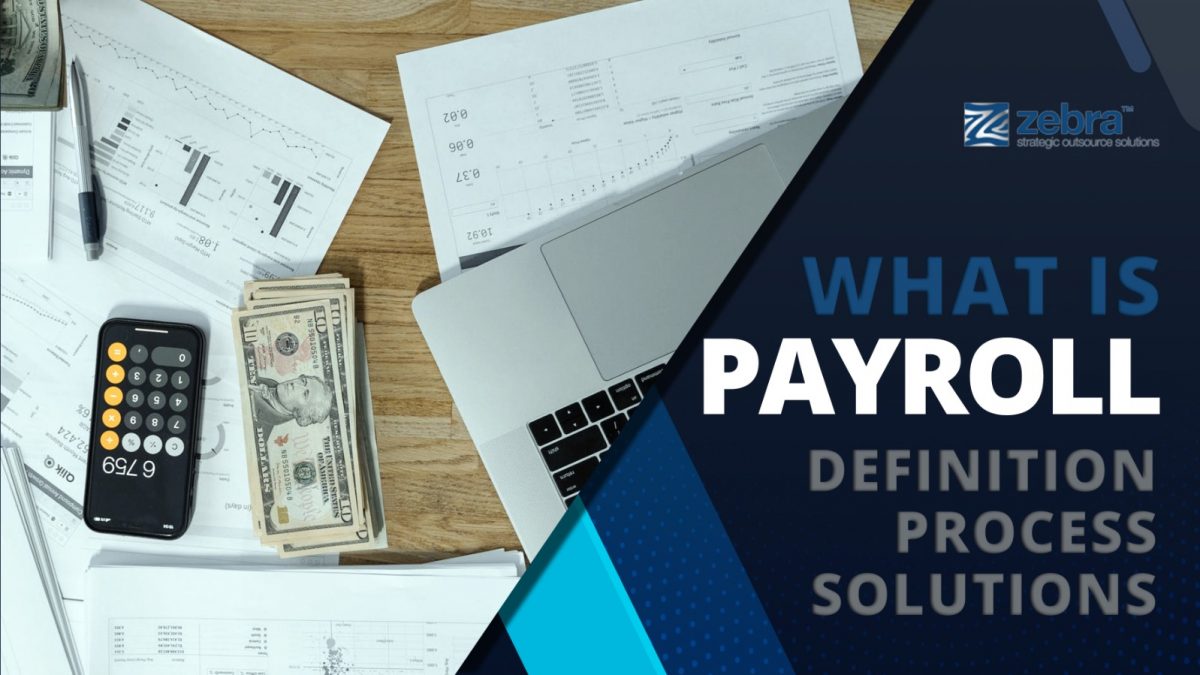
Payroll processing is a necessary but complex business process. Every business is striving to make it as efficient as possible, yet mistakes seem to be inevitable. To ensure the business is operating its payroll most efficiently, the entire process of it should be well understood and it is time for businesses to learn more about payroll automation and take a leap of faith into this new technology.
What is Payroll ?
Payroll is the amount of compensation a business must pay to or is due to its employees in a given period of time. Conventionally, small-scale businesses would handle payroll directly on their own by their accounting or human resource department. Depending on some variables like overtime pay and sick pay, payroll can be sometimes one of the main expenses to the firm and the amount is deducted from the gross income, hence reducing the taxable income. Nowadays, in response to the outsourcing economy, there is an increasing number of firms that are outsourcing payroll to specialised companies that handle employee benefits, insurance, paycheck processing, and accounting tasks, such as tax withholding. Meanwhile, leveraging technology is used by fintech firms, such as Atomic, Bitwage, Finch, Pinwheel and Wagestream, to simplify payroll processes. With these solutions, employees will have greater convenience and innovative technology-enabled services required by the fast-changing economy.
How to Process Payroll?

1. Pre-Payroll Processing
1a. Onboard employees
To commence with, onboard employees and the list of employees to be paid should be prepared as the initial step to process payroll.
1b. Define Payroll Policy
After preparing the list of onboard employees and employees to be paid, payroll policies including pay policy, leave and attendance policy, employee benefits policy, etc. should be defined and approval should be obtained from its management to ensure the execution of payroll is up to the mark.
1c. Collect Employee Data
Employee information is necessary for payroll processing. Inputs from employees like their PAN, address, bank account details, etc., are collected when they are newly hired. The tasks of gathering employees’ data for larger companies are overwhelming if they are manually done. In this case, payroll software with integrated features like leave and attendance management, employee self-service portal, etc., would turn the data collection process into a speedy click.
2. Actual Payroll Processing
2a. Validate Employee Data
Given that the pre-payroll processing is well done, the actual payroll processing will take place by first validating the employees’ data. As mentioned, employees’ information is collected and the validity of the details will be checked against the company’s policies, authorization or approval matrix, appropriate formats etc. During this process, it is essential to check and confirm that all current and active employees are taken into account while former employees will be excluded from the salary and compliance payments.
2b. Calculate Payroll
In the calculation stage, previously validated inputs from employees are computed into the payroll processing system. The result is the net pay after adjusting necessary taxes and other deductions. As calculations are done using spreadsheets, clerical and mathematical errors are common and reconciliation is difficult to reach. Thus, automated payroll software is a handy tool to help eliminate the risk of miscalculations.
3. Post-Payroll Processing
3a. Issue Payments
Succeeding the actual payroll processing, salary transfers have to be made. Payment can be proceeded by different forms including cash, cheque and most commonly, bank transfer. Before the transfer, businesses have to ensure that their bank account has sufficient funds for the transfers to ensure smooth payment transferal. Then, the concerned bank will receive a salary bank advice statement with particulars like employee id, bank account number, amount of wages etc., to disburse salaries to the employees. These tasks are not only mundane but also time-consuming. Similar to the calculation of payroll, automated payroll software could help to eliminate these unpleasant tasks with its one-click salary disbursement function. Following the disbursement of salary, payslips and tax computation sheets are distributed to employees. With an automated payroll system, employees can directly log in to their account and have access to their salary payslips without the need to distribute payslips.
3b. Report Taxes
Last but not least, after handling all of the above tasks, businesses have to report taxes to the government based on their district tax policy.
Key Challenges of Handling Payroll

1. Keeping Up With Compliance
The calculation of employees’ payroll is complex as each calculation is derived from distinct employee data. These calculations have to be appropriately filed and submitted to the government in a specific time period. Since laws change from time to time, it can be very expensive and inefficient if businesses use the traditional manual way to work on compliance because it is hard to incorporate these changes in spreadsheets manually after decoding the new law. Not to mention one of the most challenging parts, explaining the difference and implication to their employees. To avoid unprecedented legal trouble and penalties, it is important to follow through with all regulations flawlessly.
2. Spreadsheets Complications
In Hong Kong, a significant number of firms are still heavily relying on pen and paper or spreadsheet-based payroll management and processing. As mentioned, such a conventional mode of payroll setup is time-consuming. As the business expands, the number of employees increases and thus the number of spreadsheets increases too. Given a large number of employees, management has to work on the spreadsheet collaboratively and mishandling information is common. Complications are caused by the use of spreadsheets.
3. Data Security
During the process of data collection from employees, a substantial amount of personal data is collected for payroll processing. However, paper documents are easily misplaced and documents saved on spreadsheets are not highly secure as well. Failure in protecting these data will lead to breaching the confidentiality of employees’ sensitive data and hence bringing serious legal consequences to the company and damaging the company’s reputation.
4. Lack of Flexibility
If companies are handling their payroll manually, the payroll management department has to routinely complete the tasks mentioned above to make sure that the payroll processing procedures are done on time and point. Also, employees have to update their change in personal particulars to the team from time to time. They require painstaking efforts and the entire process will be put to a halt if an employee fails to submit their records on time.
Different Payroll Processing Solutions

1. Spreadsheets
One of the most cost-effective methods is the spreadsheet-based payroll management system for small businesses with only a handful of employees. It involves calculations using a set of mathematical formulas in standard templates to generate salary and compliance payments.
2. Automation
To cater for the challenges that go along with the traditional spreadsheet payroll processing methods, automated payroll software is the new normal for many companies to reduce manual efforts and enhance efficiency. There are a lot of payroll automation tools and software available in the market.
3. Outsourcing
Payroll outsourcing means delegating the payroll execution process to a trusted agency by providing it with necessary information like attendance, leave reimbursement details, etc. The agency will then handle payroll processing on behalf of the company according to statutory compliances.
Which Solution Suits Your Business?
After understanding more about payroll processing, automated payroll software might be opted for. And there is a lot of payroll software available to choose from in the market and it is crucial to select the most suitable tool to assist your business. And the following features are suggested when selecting software. First, it should be easy to operate without the need for a user manual. Second, it should be highly automated. Third, with its help, employees should be able to access and help themselves to update their documents. Forth, it should provide leave and attendance management via a web portal, APIs or biometric devices.
How Zebra Can Help You?
As a leading human resources agency in Hong Kong, Zebra takes pride in providing professional and comprehensive end-to-end payroll outsourcing services with full compliance against local employment regulations. It automates payroll management and ensures accurate calculations of staff benefits and compensations. It reduces the costly inaccuracy from manual mistakes. Legal and human resources advice is also provided when in need. You don't need to worry about the payroll process after subscribing to Zebra’s ePayroll solution.





